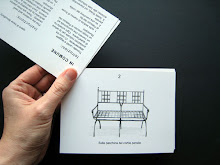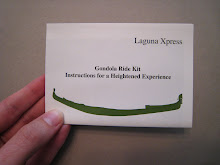Now that he is gone, I would like to share one trail and location with you. It combines history with glorious mountain panoramas. That is the Mount Lagazuoi, a stronghold for the Italian and Austrian troops during WWI.
View of Lagazuoi with cable car from Passo Falzarego

We started our hike up the Austrian side, leaving Passo Val Parola and following the route Kaiserjaeger. The Austrians had this side and the top of Lagazuoi as its defence. Along with the neigbouring Sas de Stria (see post), it created and almost invincible defence strategy because they could see far into the valleys and along the only paths that the Italians needed to gain territory.
Val Parola Pass and the Austrian fort Tre Sassi
 A view of Sas de Stria and the Marmolada (with glacier) in the distance
A view of Sas de Stria and the Marmolada (with glacier) in the distance
The trail features a suspended bridge that is a special treat along the hike. This is not the most common route to take up the mountain since it is a little bit more difficult than the one going up the front of the mountain at Passo Falzarego. However, I find it more interesting to take since it focuses on the Austrian front before we will switch over to the Italian section. It also presents the hiker with a separate side of the mountain and its views to take in, which differ from the second section of the day's walk.

The summit is always gratifying, here at 9029 ft.
Me with Mount Marmolada in the background, where there is a small museum dedicated to the Great War.

Rifugio Lagazuoi

After a short lunch, we passed the Rifugio Lagazuoi (which is reachable directly by cable car) and headed into the gallerie (tunnels) which were carved 1 km long through the mountain. The darkness, dampness, tight quarters and slippery steps make you think hard about the soldiers' problems while fighting that war. The winters were devastating. It was hard to survive, let alone fight in those conditions. My father hit his helmet-protected head about a dozen times on the ceiling while trying to make it down the tunnel just once. He is tall, but I don't think the soldiers had it too easy avoiding the same bumps a century ago. And the soldiers were there for 4 long years.
Tunnel

Artillery perch

Every so often, hikers now catch a view a great view from what used to be the artillery points and defensive holes which act as windows now.
The tunnel ends at the Cengia (Ridge) Martini, an Italian position under the Austrian line, protected by some rock formations.

The last half an hour of walking is an easy stroll down to Passo Falzarego.

If you are a WWI buff and like to hike, this is the place to go!
For more information about WWI , consult the following site: click Museo della Guerra, focusing on the nearby Trentino region but also including information about the Veneto front; Museum of the First World War in Marmolada; Five Towers open air museum in Lagazuoi area featuring still lifes of the war scenes with mannequins.
For more information about hikes in the area: click Cortina.Dolomiti.org







